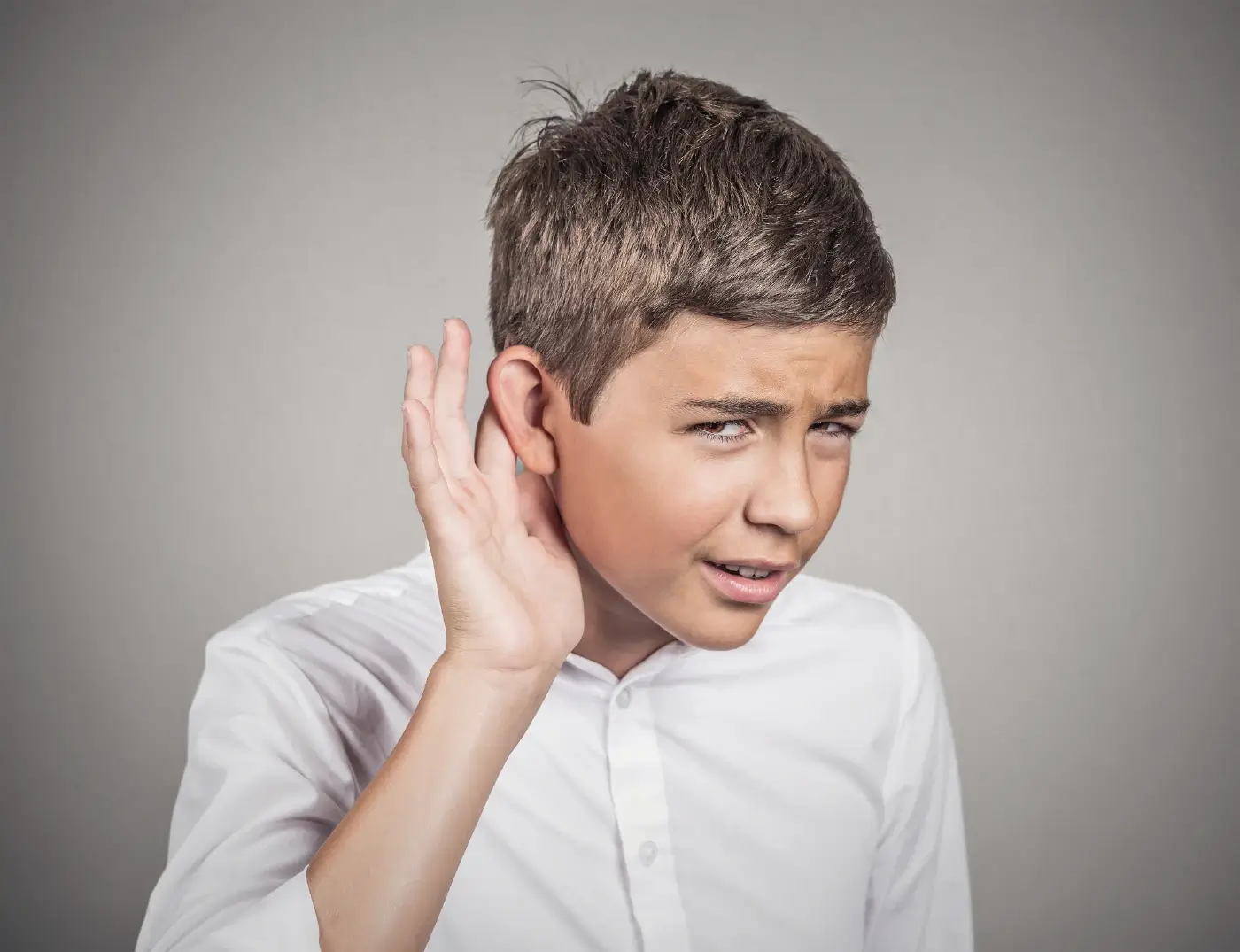Blog
Blog
Childhood hearing loss: it’s not nothing

Hearing loss is more common in young people than you think. The Canadian Health Measures Survey found that 8 per cent of children and youth aged six to 19 have hearing loss. Here is some important information to know about hearing impairment in children.
The facts
Hearing sounds and words helps children learn to speak and understand language. Consequently, even minimal untreated hearing loss can cause speech and language developmental delays.
Hearing difficulties for school age children may cause a student to have learning challenges. They may struggle to keep up with lessons, disengage or act out. In fact, children with a hearing impairment are 10 times more likely to be academically unsuccessful.
Hearing loss can also make it harder for children to communicate with others and make friends. It may affect their self-esteem, leading to behavioural problems.
Conductive hearing loss
Conductive hearing loss is the most common type of hearing loss in children. It occurs when sound becomes muted in the inner ear due to a blockage in the outer or middle ear. Mild conductive hearing loss is typically caused by:
- Wax or foreign objects in the ear canal
- Swimmer’s ear,fluid in the middle ear, or an infection behind the eardrum
- A deformity of the outer ear, ear canal or middle ear bones
If your child’s hearing loss is caused by an infection or foreign body, treatment may include antibiotics or antifungal medications. If the problem is physiological, hearing aids may be prescribed. In some cases, surgery may be required.
Signs of hearing loss in children
The signs of hearing loss aren’t always obvious, especially in children. Look for these telltale signs:
- They frequently misunderstand simple commands or directions and is asking for repetition more frequently than usual
- They watch your face intently when speaking
- They sit very close to the TV, and/or ask for the volume to be increased louder than average
- They’re exhausted at the end of the school day
- They’re struggling academically or showing signs of behavioural or social difficulties
Hearing within normal limits for a child is considered between -10 to 15 decibels (dB) at all frequencies. Minimal hearing loss is between 16 to 25 dB. Mild hearing loss is from 26 to to 40 dB. Moderate hearing loss is 41 to 55 dB, and moderately-severe hearing loss is between 56-70 dB. A hearing loss between 71 to 90 dB is considered severe, and profound hearing loss is above 91 dB.
If you suspect your child has hearing problems, make an appointment to see an audiologist. With hearing aids or cochlear implants, hard-of-hearing kids can become are as capable of learning as their peers.
Book a children’s hearing test in Calgary, Grande Prairie or High River
If you think your child may have hearing difficulties, the audiologists at Soundwave Hearing Care can help. We offer pediatric hearing care services, includingchildren’s hearing tests, hearing aid and DM fittings and routine maintenance of equipment, and auditory processing and sound tolerance assessmentsWe also provide various hearing devices, like hearing aids. Contact us today for more information. We also provide various hearing devices, like hearing aids and custom lifestyle molds. Contact us today for more information.
All the blogs are reviewed and edited by our clinic's lead audiologist, Dr. Anne Wooliams. Dr. Woolliams is an experienced audiologist specialized in pediatric audiology, auditory processing, and tinnitus/sound sensitivity therapy. She is dedicated to providing top-notch hearing care and helping her clients improve their language and communication abilities. Dr. Woolliams' expertise in literature and linguistics, combined with her passion for helping people improve their language and communication, make her an incredibly valuable asset in the field of audiology. Learn more about Dr. Woolliams.
